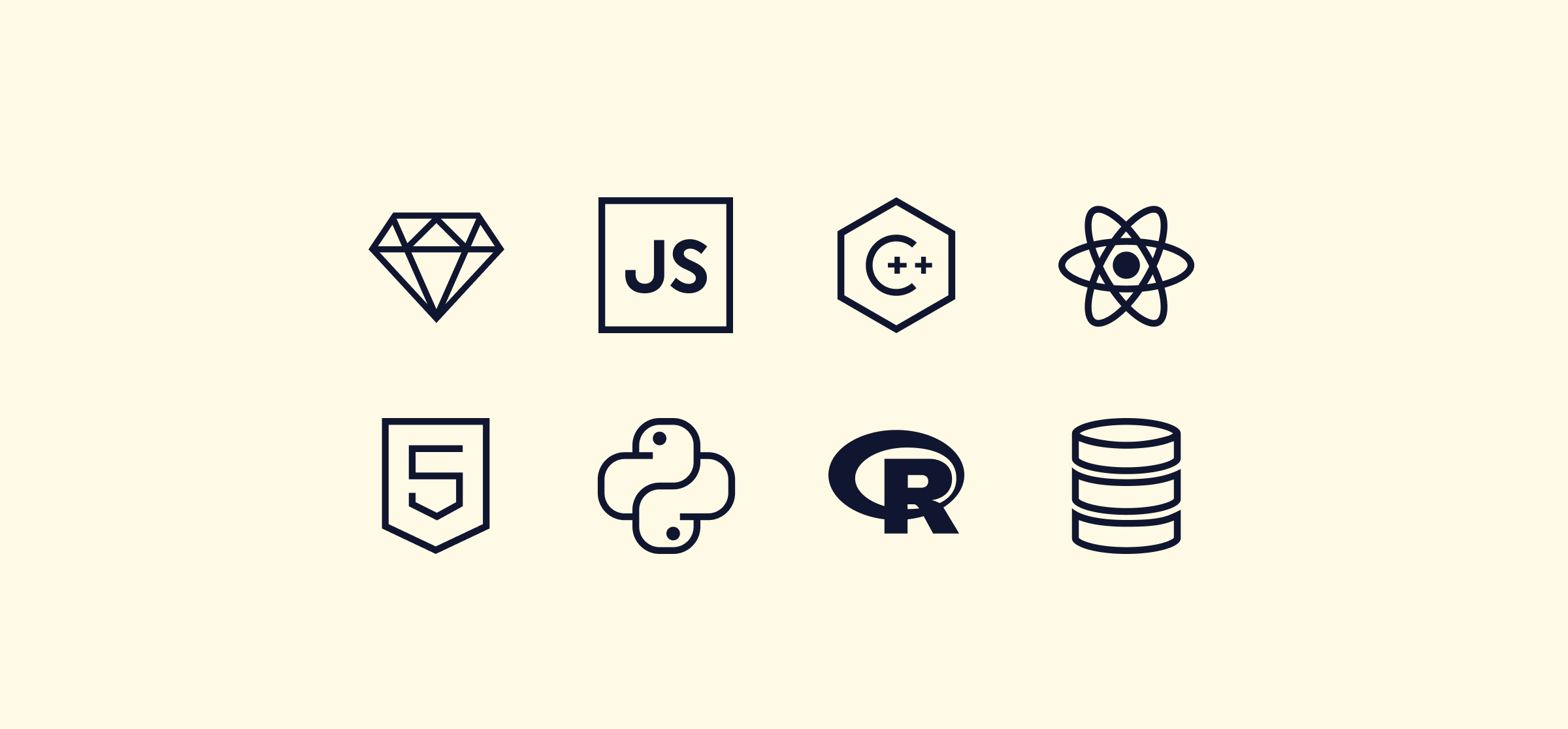From Pretty Logos to Real Impact: How I Shifted My Focus from Visual to Emotional Branding
Welcome to Creator Columns, where we bring expert HubSpot Creator voices to the Blogs that inspire and help you grow better.

Welcome to Creator Columns, where we bring expert HubSpot Creator voices to the Blogs that inspire and help you grow better.
I never wanted a business that only looked good from the outside. Creating only to satisfy the eyes of onlookers, audiences, and critics would be, and will always be, a waste of my time.
Over a decade ago, I walked away from a dull, corporate job because it felt like a trap — a suffocating environment designed to put me on a creatively draining conveyor belt headed for “Welcome to 65 and retirement!”
Frankly, that wasn’t for me. I became an entrepreneur so that I could build a business that is a free-flowing, evolving extension of who I am, rather than morphing it to fit what I think the industry wants it to be.
For most of my career, I’ve been a “figure it out” sort of girl. I’ve DIY-ed my way to success, including creating my own logos and coding my old websites. So, when I realized the visual aspects of my business didn’t necessarily align with the heart of it, I paused, evaluated, and made a shift.
In the process, I learned the vital difference between visual and emotional branding. This evolution took time because, with my background in photography, I am a very visually-inspired person!
Eventually, I learned how to harness my obsession with pretty logos, fun fonts, and gorgeous aesthetics and integrate the deeper work of cultivating a brand that creates meaningful connections with my audience. When connection is your brand’s primary goal, it drives real (and better) results.
Your brand needs your heart and soul. Whether it’s a small side gig or your full-time work, your branding (visuals and messaging alike) can and should be the bridge between you and your audience.
Without emotionally driven branding, you’re having to bridge the gap yourself — and likely exhausting yourself in the process.
So, let’s walk through my experience in learning not only the difference between visual and emotional branding but also how I made the change in my business for the long haul.
The Difference Between Visual and Emotional Branding
I know “branding” encapsulates a lot of aspects of what you do — it’s basically the identity of your business. When you create a brand, you’re likely creating a series of logos, color stories, typography, and other visual design elements.
The visual aspects of your brand matter because they’re how your customers recognize you and differentiate you from everyone else. You can use these elements to appeal to your audience’s aesthetic, saying, “Hey, you and I probably like the same things!”
Based on design, like the appeal of a book cover, your audience will generally gravitate toward you. This is the first impression.
However, your brand’s impression doesn’t stop at the visuals. This is merely a quick glimpse, a drive-by. You want more than just a shallow connection because this can be replicated (or faked) by anyone.
We’ve all unwrapped (literally or figuratively) something only to find that what’s underneath is not what the advertisement sold to us. You can be shiny, but you want emotional depth.
That’s how you build long-term loyalty and connection in a crowded marketplace.
Most people think branding stops with the visuals, but I’d argue that’s only where it starts. A true brand is the personality behind your offers — going way beyond a font or palette.
Emotional branding allows your brand to show up with feeling, not just an appealing look. Creating an emotional brand can drive deeper bonds with your customers as you show your shared values, beliefs, and emotional experiences. Social media made this way more possible.
In fact, as brands and businesses began to show up on social media, the audience demanded a deeper connection from them. Since that day, brands have needed to become good storytellers.
Emotional branding may be about sharing yourself.
I remember the marked change that happened in my photography career when I transitioned from sharing solely client images to sharing myself.
I shared myself editing with my dogs lying over my feet, the reality of what being an entrepreneur looked like, I shared as I decorated my first home with thrift store finds, and the puppies we fostered.
I was showing who I was and ultimately what I loved and that resulted in my clients seeing an image of someone who felt like a friend. It wasn’t just about how I edited my photos; now they could see who edited the photos. They could envision me in my life, chasing dogs, or hanging pictures on the wall.
I went from a business to a brand, a personality. They wanted me there with them on their special days, not solely the results I would deliver to them. Because I understood that pretty much above all else, on a wedding day, you want good people bringing the good vibes.
And that’s exactly who I was and what I was delivering!
People want to be able to interact (or relate) with their favorite brands. Here are some easily recognizable companies that rely on emotional connections to their brand:
- Nike: Inspiring customers to achieve their personal best.
- Apple: Fostering a sense of innovation and belonging.
- Coca-Cola: Associating the brand with happiness and togetherness.
While these companies are massive, global superbrands, I think we can pull a lesson or two from how they show up: they tell us a story about who they are.
They’re not just flaunting what they do, but they want us to feel good about associating with them. They create a space for a customer to enter, belong, and connect to a message, rather than just use a product or hire a service.
The difference can feel subtle, but shifting can make a (literal) world of difference.
How I Shifted to Emotional Branding
The shift started in my gut at first. I realized I’ve never felt a pull to show up as perfect, polished, or shiny. I craved more realness so that manifested in what and how I created.
From there, I examined how my audience across multiple social media platforms responded to my brand. I watched what questions I got asked over and over again — were they curious about my life, my relationships, my work, my processes?
The messages, replies, blog comments, email inquiries, client testimonials, and even podcast reviews helped me piece together the stories I was telling and the way my audience was perceiving me.
I took time to make sure that aligned with how I wanted them to perceive me. Did it align with my vision for my business and brand?
My business is me, so I want to make sure people remember that I am a real, living human who has a perspective I love to share.
What I am selling isn’t some regurgitation of what anyone could search for on Google. It’s processes that are learned, lived, and pieced together by me. That’s a major selling point and differentiator.
You could easily learn business from a million different places and people, but you can only learn my methods from ME in ONE place: my digital courses. So, I needed to make sure that the me-element is consistently visible and unmistakable in how I present my brand online.
It’s not about the name (or even the premise) of the course as much as it’s about knowing you’re going to sit down and learn from me. People want that kind of connection.
When I read the testimonials, this is extremely evident. My students rave about the course by saying things like “Learning from Jenna changed my business!” What you don’t hear is “This course changed my business” or “I loved the ads I saw for this course!” Ha, of course not, but you see the difference.
My digital course landing pages still present a results-oriented purpose to my potential students, but the brand itself is driving a connection between myself and my customers.
The way we approach copywriting, page layout, color choices, and our main offer’s primary selling points stems from the desire to make sure our customers feel seen, understood, and guided. I want them to feel a sweet relief when they read my sales pages because I build my offers to be entire solutions.
They’re complete, they’re effective, and they’re created to actually help and simplify. I want my customer to feel like I’ve met their gaze and to know without a doubt that I really do understand their needs because I used to stand where they are now.
The Impact of My Evolved Brand on My Business
Shifting to an emotional brand has led to more buy-in on the front end as my audience is excited about my offers before I even drop them. I no longer have to put all my energy into hoping an ad or announcement alone catches their eye.
Algorithms, unfortunately, don’t work like that. Warm leads going into a paid offer is far better than “Oh, I didn’t know you were working on anything!” Or “You hardly show up in my feed anymore!”
More interaction with your customers means more access to knowing what they want and need from you. Feedback is a critical part of connection. It can help you measure success and optimize your business as you go, rather than veering way off course and having to make big, sweeping changes down the road.
I am seeing a better connection to what I am all about. The questions I get about my life are evidence of that, too. I get fewer questions about what I do and more questions about how people can get involved or learn more from me.
I feel seen and understood by much of my audience which means I get to spend better, more meaningful time engaging with them, rather than explaining who I am or repeating myself.
The profit shift looks like less time and money spent on screaming about offers online (i.e. less ad spend in the wrong places, less external apps and tools needed to get the word out there).
Instead, I have customers who have emotional buy-in to my offers, my experiences, and new creative endeavors I will do in the future. They feel that my brand is being led and shaped by their needs and see it evolve with them, which means they want to stick with it!
And ultimately, I feel aligned with my brand. That’s a vital piece of the puzzle. You need to feel confident about how your business shows up online. You know when you feel good when you walk out your front door and when you don’t quite feel like yourself, right?
We all know the difference between that feeling of “Yeah, I like me!” and “Oh, please don’t perceive me today.” I wanted to have that “I like me!” feeling flood my mind every time I post a blog, publish a podcast episode, or link up my audience to a new offer. I want to know I’m showing up as clearly me.
Being able to show up through an emotional brand allows me to do that!
How to Keep Your Emotional Brand Evolving
1. Be willing to listen and learn as you go.
Yes, the internet changes all the time, but here’s what’s even more true: you are changing all the time. And if that is true, the same goes for your audience. Their needs, attitudes, lives, and circumstances are constantly shifting.
Unless you’re a rare sort of clairvoyant, the only way you’re going to know what their shifts are is by asking them. Leverage that newly strengthened connection between you and your audience by getting in the habit of keeping the conversation open.
Feedback will help you not only get information on what they want to see from you but that check-in will make your audience feel seen and known.
2. Schedule time to check in with your brand.
Instead of feeling the pressure to keep your brand in constant edit mode (that’s exhausting and unnecessary), schedule moments to check in with your brand.
Whether it’s annually or quarterly, carve out time to analyze how you feel about your brand. Assess the visuals; are they still representing who you are well? Read through your website copy and feel out the tone; is the voice still right? Review your social media posts and look for what’s been delivering results. What’s the common thread? Drop a feedback request to your audience and ask how they’re doing and what they want from you.
These check-ins might put a little homework on your list, but more often than not, you’ll get to walk away knowing your brand is doing exactly what it needs to do.
3. Focus on how you make people feel.
The visuals of your brand will always play a role but don’t get lost in the fonts or how flashy your videos are. Instead, focus on how you make people feel.
While I still get excited about color theory, fresh graphic design elements, and ways to make my website pages load quickly and flow well, I know how secondary those pieces are to my bottom line. Remember that those elements can’t go far without your vision and personality injected into them.
When your tagline feels like your mantra, then your audience won’t just have brand recognition. They’ll read your tagline, your social media posts, and your latest offers and see themselves in them, too. An emotional brand means that your mantra can become theirs.
![]()
What's Your Reaction?








































.png)































![Download Now: 150+ Content Creation Templates [Free Kit]](https://no-cache.hubspot.com/cta/default/53/5478fa12-4cc3-4140-ba96-bc103eeb873e.png)


![New Marketing Jobs That Could Focus on AI [Data + Examples]](https://blog.hubspot.com/hubfs/Untitled%20design%20%2832%29.jpg)









